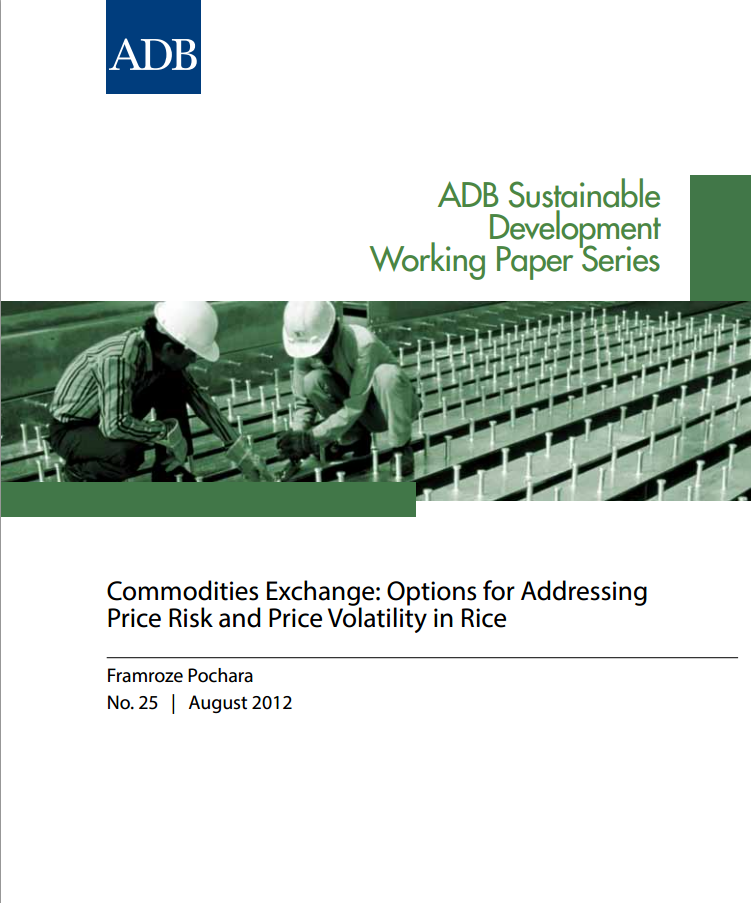Commodities Exchange: Options for Addressing Price Risk and Price Volatility in Rice

In this paper, Framroze Pochara, a capital markets veteran with over 25 years of experience in the industry, takes off from the differing views of two prominent authorities about rice futures in the Association of Southeast Nations (ASEAN) and tackles various options at the country and regional levels to foster price discovery and price risk management. He presents examples of countries successfully using commodities exchanges and different hedging instruments and posits that there is no reason why these very same instruments cannot be used in the ASEAN region to manage the risks of rice price volatility and help address food security. The message is that there are tools that can work but these need to be tailored to local conditions. Stakeholders, including the public and private sectors and ASEAN, need to lay down the essential infrastructure that can help bring in price stability and better price realization to farmers.
The Commodities Exchange: Options for Addressing Price Risk and Price Volatility in Rice is one of four working papers presented at the ASEAN Rice Trade Forum in Cambodia in June 2012. The Forum, organized by the ASEAN Food Security Reserve Board, the ASEAN Secretariat and ADB, brought together various stakeholders to share and analyze market information as well as to coordinate policy responses to help avoid the repeat of the rice price crisis of 2007–2008. The crisis, triggered partly by the export restrictions of key rice exporting countries and the panic-buying of major rice importers, plunged close to a billion people worldwide into greater hunger and poverty.